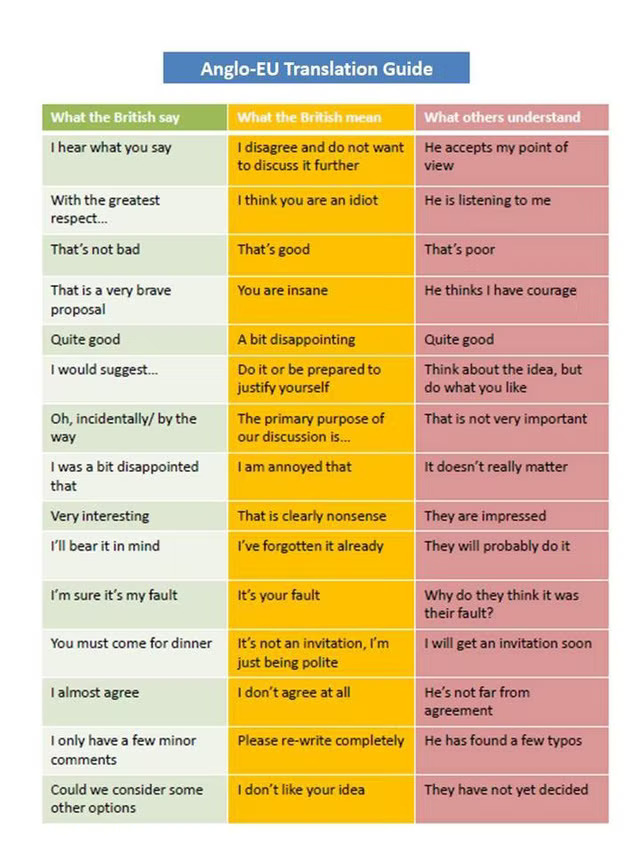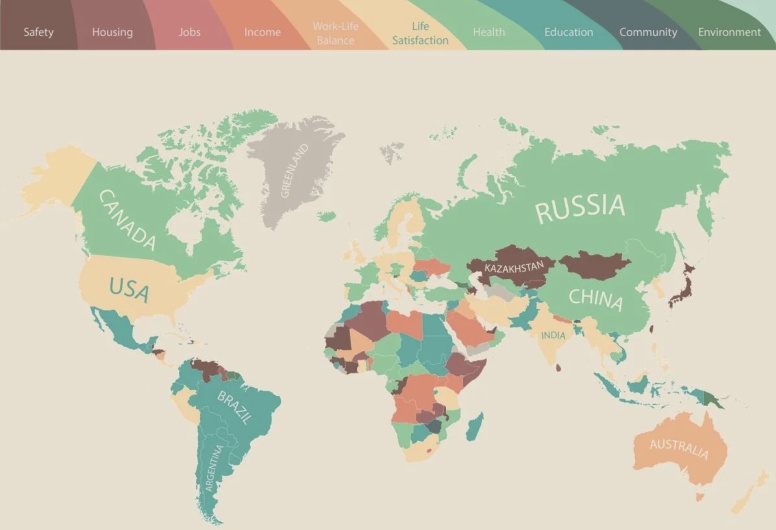When you have a job opening and you’re looking to hire someone from another country, it’s easy to get excited about bringing a new culture into your company. However, while hiring IT candidates globally opens up a whole new world of opportunities for your business, it also comes with cross-cultural challenges.
That’s why you may be wondering how to communicate with candidates from different countries, especially if English is their second language. The answer is short — learn more about their culture and build your communication strategy with those insights in mind. Our local recruiters constantly get and stay in touch with international tech specialists, and in this article, they shared their insights and best practices on how to communicate with global and diverse candidates.
Mentality matters – how candidates from different cultures communicate and how you can approach them
Mentality features, communication styles, body language, and rules of politeness matter for both business and personal communication. The trick is that different people put different meanings into their words and actions. As an example, take a look at this humorous comparison of what British people say, what they actually mean, and how people from other cultures understand them.

Still, saying a thing while meaning something completely opposite isn’t the only challenge you are likely to face when hiring international employees. There are strikingly different approaches to the way people communicate, use body language, make decisions and set life priorities in different countries.
Communication Strategies for Remote Teams: Tips, Benefits, Best Practices
Now, you may wonder: how does this affect communication in recruitment? When talking about hiring specifically, the approach that is more than fine for candidates from Mexico, for example, might be completely weird for a candidate from China because of differing mentalities and worldviews.
So, to help you adjust your recruitment communication strategy and have a better chance of attracting top talent from abroad, Bridge’s talent experts would like to share some of the best practices you may use.
Use relevant communication channels
To communicate with global candidates more effectively, you have to use the same communication channels as they do. For example, candidates from Eastern Europe mostly don’t mind recruiters reaching out to them via instant messengers. In recent years, Telegram has become especially popular in this part of the globe and is frequently used for business communication with both recruiters and team members.
However, if you want to hire ICT professionals in the US or Western Europe, it is better to communicate with them in a place you found them for the first time — for example, on LinkedIn or using a job board-based communication tool. In this case, if the candidate applies to your opening using your company’s website or LinkedIn profile, respond to them with a letter to an email specified in their CV. And what’s more important, candidates from the US and Western Europe are more likely to be repelled by a quick transition to messengers, finding this practice somewhat bizarre.
Start a conversation on the right note
You have only one chance to make the first impression, and communication during the hiring process isn’t an exception. That’s why, when reaching out to foreign applicants, you have to make sure you did your homework and both you and your applicant speak the same language.
For example, in Western Europe and the USA, getting started with small talk on a neutral topic is the right approach. The candidates from these countries prefer establishing personal contact before proceeding with discussing your job opening and their experience. The same matters for Brazilian candidates. They would also like to know the benefits first, and only then decide whether the further discussion is worth it or not.
Romanian developers would also like to discover the details first. As our in-house tech talent sourcer, Karina Shamaeva, says, they usually ask a lot of organizational questions, and only then, decide on scheduling a call.
At the same time, candidates in Eastern Europe prefer getting straight to the point. When talking about Eastern European cultures, discussing the weather with a recruiter and asking about the candidate’s mood or well-being will sound off. British candidates, in turn, are likely to use humor (which people from other countries often struggle to understand).
Show the value of your offer
When evaluating the job opening, people from future and past-oriented cultures also think differently. For example, candidates from the US (a future-oriented country) would like to hear about your company’s growth projections and ambitious goals. However, if you want to hire tech workers from India or China, they are more likely to develop an impression of your company by evaluating its past achievements. Consider this difficult-to-guess difference when writing a job description targeted at different audiences.
Life goals and priorities also differ across the world. For a better understanding, take a look at the image below.

As we can see, IT candidates from the US, UK, and Eastern Europe (Germany, Poland) prioritize life satisfaction. Health matters most for Spanish and French candidates. Australians seek work-life balance. So, you can highlight the corresponding values when pitching your job offer and engage more candidates from a target labor market.
Use body language correctly
Remote hiring slightly facilitated communication with international candidates. However, you still have to be attentive to what you say, what you do, and how you use your body language during online conferencing with candidates across the globe. For example, keeping constant eye contact when talking is a norm in the USA, but behaving in the same manner with people from Indonesia will be a sign of disrespect to them.
There is also a significant mentality gap when it comes to smiling during business communication. As you may know, Americans are believed to be the smiliest nation in the world. People living in Switzerland, on the contrary, have the highest level of happiness on the globe, and at the same time, they are not big fans of smiling a lot.
Generally speaking, Australians, Americans, and Canadians have smiling cultures. They smile at strangers, customers, friends, neighbors, and recruiters too, expecting them to do the same in response. Otherwise, they will ask you why you are so upset, even if you just have a neutral facial expression. Japanese candidates, in turn, tend to suppress their emotions, behaving in a neutral, respectful, and predictable manner.

At the same time, there are also cultures where excessive smiling causes doubt in a person’s sanity. For example, in Ukraine, Poland, Lithuania, and Latvia, such seemingly friendly behavior will at best be interpreted as insincere. Candidates from these countries will smile only to express their genuine pleasure or gratitude after they feel comfortable and safe communicating with you.
Adapt the way you communicate during the interview
Candidates from different countries also behave differently during the interviews, so you have to adapt your interview communication strategy accordingly, or at least get ready for some culture-specific behaviors. For example, US employees are likely to show off their previous achievements and strengths. They are likely to behave confidently and speak loudly.
The candidates from China or Finland, on the contrary, are likely to speak softly and listen to the recruiter more than talk on their own. In these countries, such humble behavior is a cultural norm. So when hiring from these labor markets, prepare some important questions in advance, and ask them step-by-step.
Adjust ways of giving feedback
There is an interesting case published by Harward Business Review describing how different corporate cultures and mentality specifics meet each other. As you may know, Google’s corporate culture is employee-centric. The company never skimps on praise — neither material nor verbal. The Google-approved performance review forms also focus on employee accomplishments and strengths. At the same time, in France, sharp criticism is perceived as something quite normal. Further, the publication mentioned directly quotes the French manager who first encountered the Google performance review form.
“One French manager told me, “The first time I used the Google form to give a performance review, I was confused. Where was the section to talk about problem areas? ‘What did this employee do really well?’ The positive wording sounded over the top.”
What does this mean for the recruitment process? This means that you should also adapt your feedback with cultural differences in mind, especially if the candidate is not the best fit for your position.
Set the right communication speed
Communication, and thereby, hiring speed will also be different depending on the country you are hiring talent from. The reason for it is still the same — the culture-driven style and pace of living. There are the so-called “Slow-Moving” and “Hustle” cultures that define the pace people live, solve tasks, set goals, fulfill promises, and so on.
For example, a slow-moving culture is predominant in Western Europe, especially in red-tape countries, like Germany. Here, responding to an email in a week or even two is more than fine, so don’t expect your candidates to get back to you quickly. Sending them frequent follow-ups is also unlikely to speed up the response.
“Reaching out and getting a response from Portuguese developers is challenging too. This labor market is relatively small, but the demand for programmers from Portugal is growing. That’s why you have to be persistent, send follow-up messages, and constantly remind them of yourself.” – says Karina Shamaeva.
The US and Eastern European countries, on the contrary, are the ones with a culture of hustle. That’s why American, Ukrainian, and Polish candidates, for instance, usually reply faster — in a few business hours or up to two business days.
So, keep these different approaches in mind when planning interviews and estimating the time it will take to hire a candidate.
How to Source Technical Candidates: A Guide for Recruiters and Hiring Managers
Ever-green tips for effective communication with candidates worldwide
So, are there any communication rules that work in the global labor marketplace, regardless of the location? Of course there are, and you can find them below.
- Avoid slang. During business communication, slang can hardly sound professional. Slang expressions can also have different meanings, while there’s a chance a non-native English speaker has never heard certain slang words before.
- Be careful with humor. Don’t joke around too much with candidates from other countries, as they may not understand your sense of humor or be able to pick up on a joke. Also, never joke (and even never discuss) on serious topics, like politics or religion.
- Avoid close-ended questions. Close-ended questions are those that imply answering with either “yes” or “no”. In this case, some candidates may agree even if they don’t want to — just because saying “no” is impolite in their culture. Open-ended questions, in turn, allow for more flexibility when responding so that both parties understand each other’s points of view.
- Research cultural specifics before starting a conversation. There are many differences between cultures that impact how people communicate and interact with each other. That’s why the first time you talk to a candidate from another country, it can be helpful to do some research in advance and grasp their cultural specifics and mentality features.
But when you feel like you could use some help, Bridge experts are here for you. Our local recruiters would be happy to find the best-fit candidates globally, establish effective communication, and source them for your company.
Hire international employees effortlessly with Bridge
Coming up with a solid communication strategy is indeed crucial when hiring employees worldwide. At Bridge, we know it firsthand and deal with cultural differences every time we help companies find the best-fit candidates across three continents. To make the process of global hiring as effective as possible, we put data analysis technology and manual labor of human talent sourcers at the heart of our sourcing-as-a-service.
With the help of our data-driven talent sourcing engine, we find the best candidates across the globe, filtering them by location, language, experience, and expertise. We also customize every search query, and after our proprietary data engine suggests suitable candidates from a specific country, our local recruiters get in touch with them directly. Speaking the same language and having a common cultural background allows them to pre-screen candidates more effectively and ensure a cultural fit for your project.
Let our local and tech-savvy talent sourcers make cross-cultural communication easier and hiring global candidates more result-driven. Send us a quick note now to speed up your hiring campaign and avoid communication challenges along the way!



